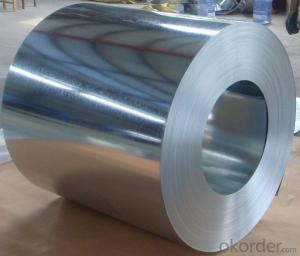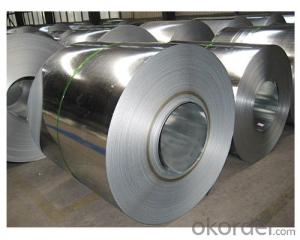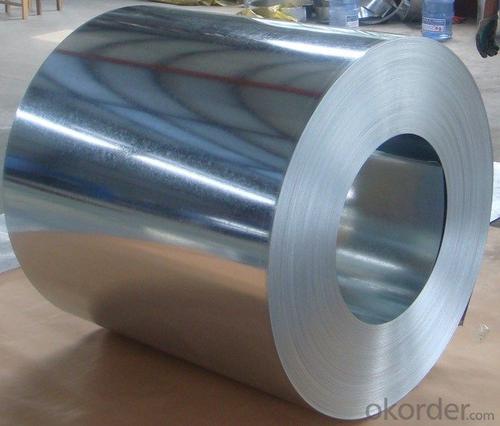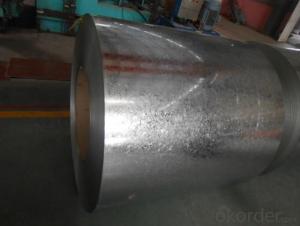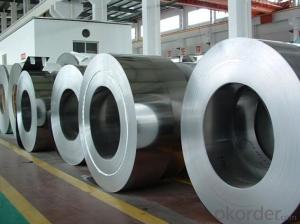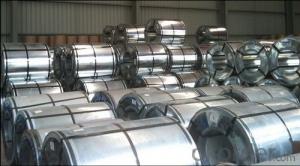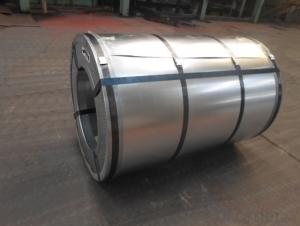Galvanized Steel Sheet in Ciols with Prime Quality Best Seller
- Loading Port:
- Shanghai
- Payment Terms:
- TT OR LC
- Min Order Qty:
- 100 m.t.
- Supply Capability:
- 10000 m.t./month
OKorder Service Pledge
OKorder Financial Service
You Might Also Like
1.Structure of Galvanized Steel Coil Description:
Hot-dip galvanized steel coils are available with a pure zinc coating through the hot-dip galvanizing process. It offers the economy,
2.Main Features of the Galvanized Steel Coil:
• Good formability
•ability
visual effect
• Base material for countless outdoor and industrial applications
Zinc coating :40-180g( as required)
Coil id:508mm/610mm
Coil weight: 4-10 MT(as required)
Surface: regular/mini/zero spangle, chromated, skin pass, dry etc.
5.FAQ of Galvanized Steel Coil
We have organized several common questions for our clients,may help you sincerely:
1.How to guarantee the quality of the products?
We have established the international advanced quality management system,every link from raw material to final product we have strict quality test;
• High corrosion resistance
• High strength
3.Galvanized Steel Coil Images
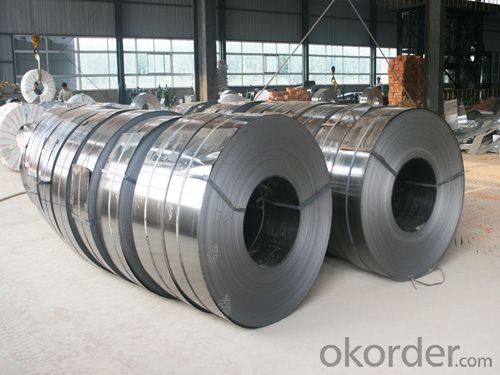
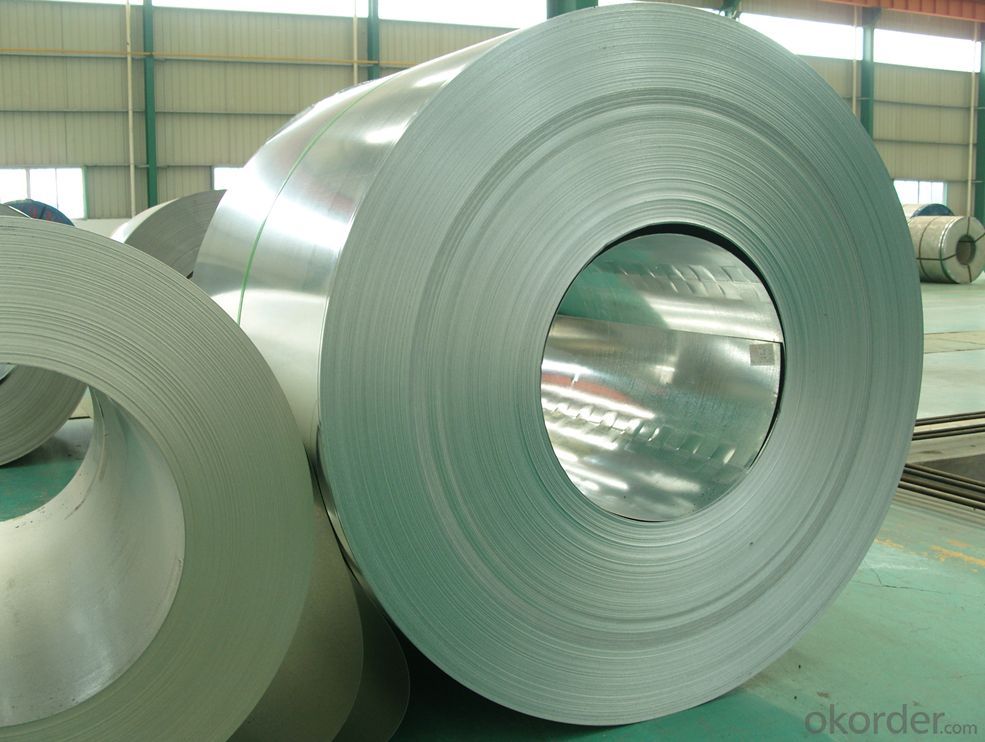
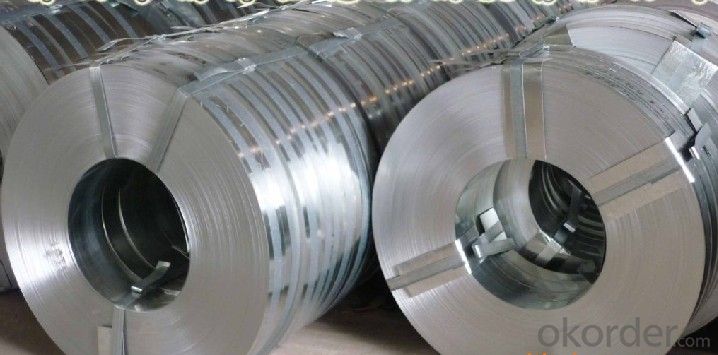
4.Galvanized Stee:914-1250mm(914mm, 1215mm,1250mm,1000mm the most common) Grade : SGCD,SGCH, Q195,DX51D Operate Standard: ASTM A653M-04/JIS G3302/DIN EN10143l Coil Specification
Width/GBT 2518-2008
- Q: What are the typical tolerances for steel coils?
- The typical tolerances for steel coils can vary depending on the specific requirements and standards of the industry. However, common tolerances for steel coils typically range between +/- 0.005 to 0.020 inches in terms of thickness, width, and length. These tolerances ensure that the steel coils meet the desired specifications and can be used effectively in various applications.
- Q: Brass as a rule I believe is betterhowever I do not plan to get into reloading any time soon I just want some cheap practice ammo so will steel case ammo hurt my gun (semi auto) any more than brass ammo and if so how much more?
- If it's new you want to use quality brass ammo the first few hundred rounds. After that it doesn't matter. But do not you cannot use brass and steel in the same session. The lacquer tends to stay behind in the chamber, will fuse with the brass and you get torn case heads. So when using steel always only use steel that session and scrub the chamber down.
- Q: What are the challenges in coil slitting?
- Coil slitting is a process used to cut large coils of metal into narrower strips of desired widths. While it offers several advantages in terms of efficiency and flexibility, there are also several challenges associated with coil slitting. One of the main challenges in coil slitting is ensuring consistent strip width accuracy. Since coil slitting involves cutting the metal coil into smaller strips, it is crucial to maintain consistent width measurements throughout the process. Any deviation in the strip width can lead to issues downstream in the production line, affecting the quality and functionality of the final product. This challenge requires the use of precise slitting equipment and careful monitoring of the process parameters. Another challenge in coil slitting is managing edge quality. The edge quality of the slit strips is critical, especially in applications where the edges need to be free from burrs or other imperfections. Achieving clean and smooth edges requires proper blade selection, positioning, and maintenance. Any defects or irregularities on the strip edges can impact subsequent processes like bending, welding, or coating. Additionally, coil slitting poses challenges related to the material itself. Certain types of metals, such as high-strength steels or alloys, can be more difficult to slit due to their hardness or brittleness. Slitting these materials may result in blade wear and premature failure, leading to increased downtime and maintenance costs. Furthermore, the presence of contaminants or surface defects on the coil can also affect the slitting process, requiring additional cleaning or preparation steps. Another significant challenge in coil slitting is handling and processing large coils. Coils can be heavy and unwieldy, making it crucial to have proper equipment and procedures in place to handle them safely. Additionally, the slitting process can generate significant amounts of scrap material, which needs to be efficiently managed and disposed of. Proper storage, transportation, and recycling of the scrap are essential to minimize waste and maintain a clean and organized working environment. In conclusion, coil slitting offers numerous benefits in terms of customization and productivity. However, it also presents challenges in maintaining strip width accuracy, managing edge quality, dealing with difficult materials, and handling large coils and scrap. Overcoming these challenges requires expertise, precision equipment, and careful process control to ensure the desired quality and efficiency in coil slitting operations.
- Q: What are the common packaging methods for steel coils?
- The common packaging methods for steel coils include wooden pallets, steel strapping, and protective wrapping such as shrink wrap or stretch film. Additionally, steel coils are often secured with steel bands or wire ties to ensure stability during transportation and storage.
- Q: What are the common applications of pre-painted galvanized steel coils?
- Pre-painted galvanized steel coils are extensively utilized across various industries due to their wide range of applications. These coils find common usage in the construction industry for roofing, wall cladding, and structural components. Their coating provides exceptional corrosion resistance and durability, making them suitable for both residential and commercial buildings. The automotive industry also heavily relies on these coils for manufacturing body panels, interior trims, and underbody protection. The pre-painted coating not only enhances the aesthetic appeal of vehicles but also provides protection against rust and corrosion. In the production of home appliances, such as refrigerators, ovens, washing machines, and air conditioners, pre-painted galvanized steel coils are commonly employed. The smooth and durable coating ensures a long-lasting and visually appealing finish for these appliances. The furniture industry also benefits from using pre-painted galvanized steel coils, which are used for manufacturing cabinets, shelves, and other furniture components. The coating on these coils adds a decorative element while offering protection against scratches and wear. In the electrical and electronics industry, pre-painted galvanized steel coils are utilized for manufacturing switchboards, control panels, and enclosures. The pre-painted coating provides insulation and protection against electrical hazards, making them suitable for such applications. In the agricultural sector, these coils are used for manufacturing equipment like grain silos, livestock shelters, and poultry houses. The corrosion-resistant coating ensures the durability and longevity of these agricultural structures. The vibrant and visually appealing colors of pre-painted galvanized steel coils make them a popular choice for signage and advertisement boards. The coated surface provides a smooth and glossy finish that enhances the visibility and attractiveness of the signage. To summarize, pre-painted galvanized steel coils offer excellent corrosion resistance, durability, and aesthetic appeal, making them suitable for a wide range of industries and applications, including construction, automotive, appliances, furniture, electrical and electronics, agricultural equipment, and signage and advertisement.
- Q: How are steel coils labeled and identified?
- To ensure accurate tracking and handling of steel coils throughout their journey, various methods are employed to label and identify them. The labeling and identification process typically consists of the following steps: 1. Initial Marking: At the outset, the manufacturer's name or logo is affixed to the steel coil, enabling easy identification of the producing company. 2. Unique Identification Number: A distinct identification number, commonly known as a coil number, is assigned to each steel coil. This number is often engraved or imprinted on the surface of the coil and serves the purpose of tracking and managing inventory. 3. Specifications of Size and Weight: Labels indicating the size and weight specifications of the steel coils are attached. This information aids in determining the coil's dimensions and weight capacity, ensuring appropriate handling and transportation arrangements. 4. Indication of Grade and Material: The labeling typically includes information about the grade and material composition of the steel coil. This essential data offers insights into the properties and quality of the steel, guaranteeing its correct utilization in manufacturing processes. 5. Heat or Lot Number: Steel coils may also bear a heat or lot number, which denotes the production batch from which the coil originated. This information contributes to traceability and quality control, simplifying identification in the event of any issues or defects. 6. Barcodes or QR Codes: Many steel coils now feature barcodes or QR codes that can be scanned using automated systems. These codes contain all pertinent information about the coil, streamlining data capture and management throughout the supply chain. Proper labeling and identification of steel coils are of utmost importance for efficient logistics management, inventory control, and quality assurance. By implementing these identification methods, manufacturers, distributors, and end-users can effortlessly track, handle, and utilize steel coils in a secure and productive manner.
- Q: How many millimeters is a number 3 steel crochet hook?
- This depends whether you have a US or a UK pattern. The pre metric UK size 3 was different to the US size 3. Google in compare US/UK crochet hooks and it gives a chart showing the metric/US/UK sizes.
- Q: How are steel coils used in the manufacturing of conveyor belts?
- Steel coils are used in the manufacturing of conveyor belts as they provide strength, durability, and flexibility to the belt structure. These coils are typically used as reinforcements or as the core material to enhance the belt's load-bearing capacity and resistance to tension and impact. By incorporating steel coils, conveyor belts can effectively transport heavy materials over long distances while maintaining stability and longevity.
- Q: How are steel tape measures installed?
- The spring piece is fixed on the shaft, the other end is connected with the measuring tape core, fixed tape shell with a shaft, the spring plate and a circle around the axis of the ruler core, wrapped after the ruler core extends from the outer end of the incision length of the shell, gently pull, the spring is tightened, the pull out the part from the incision and then removed around the shaft, then gently pull out, and then put the ruler core tied to the shaft, removed from the incision so repeatedly, until the spring to put all the ruler core recovery. Then a cotter pin on the central shaft installed on the lid, will tighten the screws.
- Q: Can steel coils be coated with magnetic materials?
- Yes, steel coils can be coated with magnetic materials.
Send your message to us
Galvanized Steel Sheet in Ciols with Prime Quality Best Seller
- Loading Port:
- Shanghai
- Payment Terms:
- TT OR LC
- Min Order Qty:
- 100 m.t.
- Supply Capability:
- 10000 m.t./month
OKorder Service Pledge
OKorder Financial Service
Similar products
Hot products
Hot Searches
Related keywords
